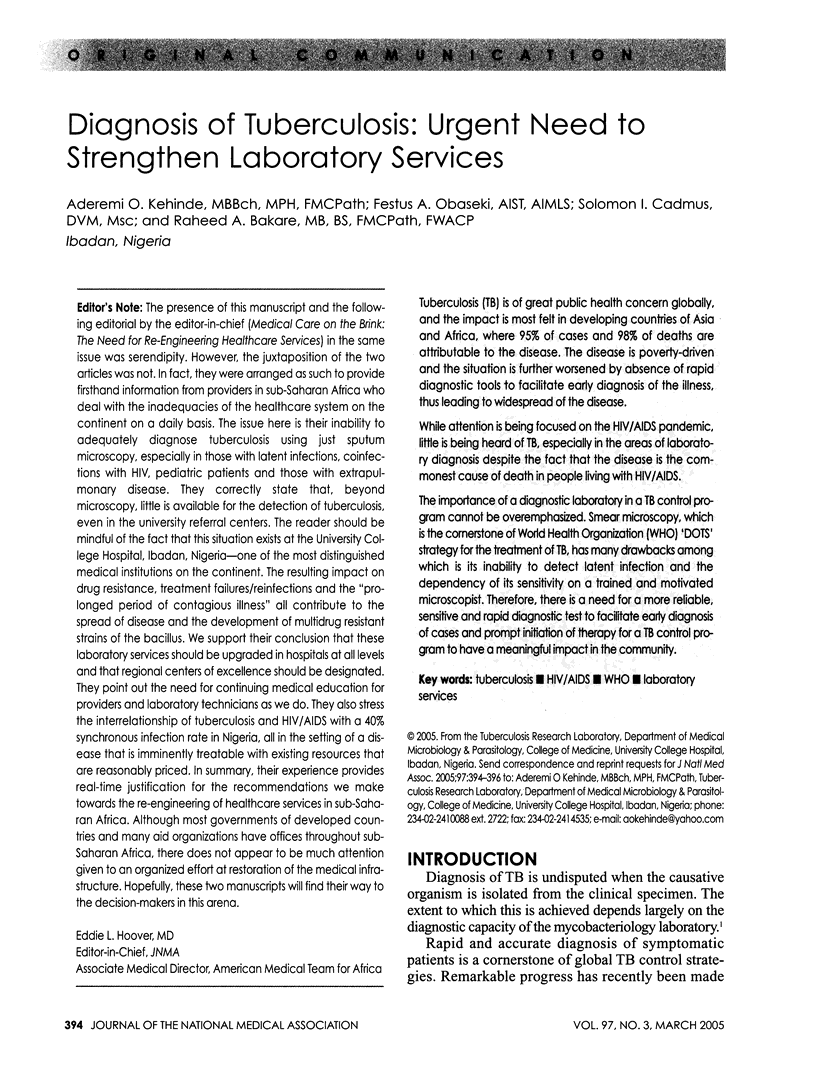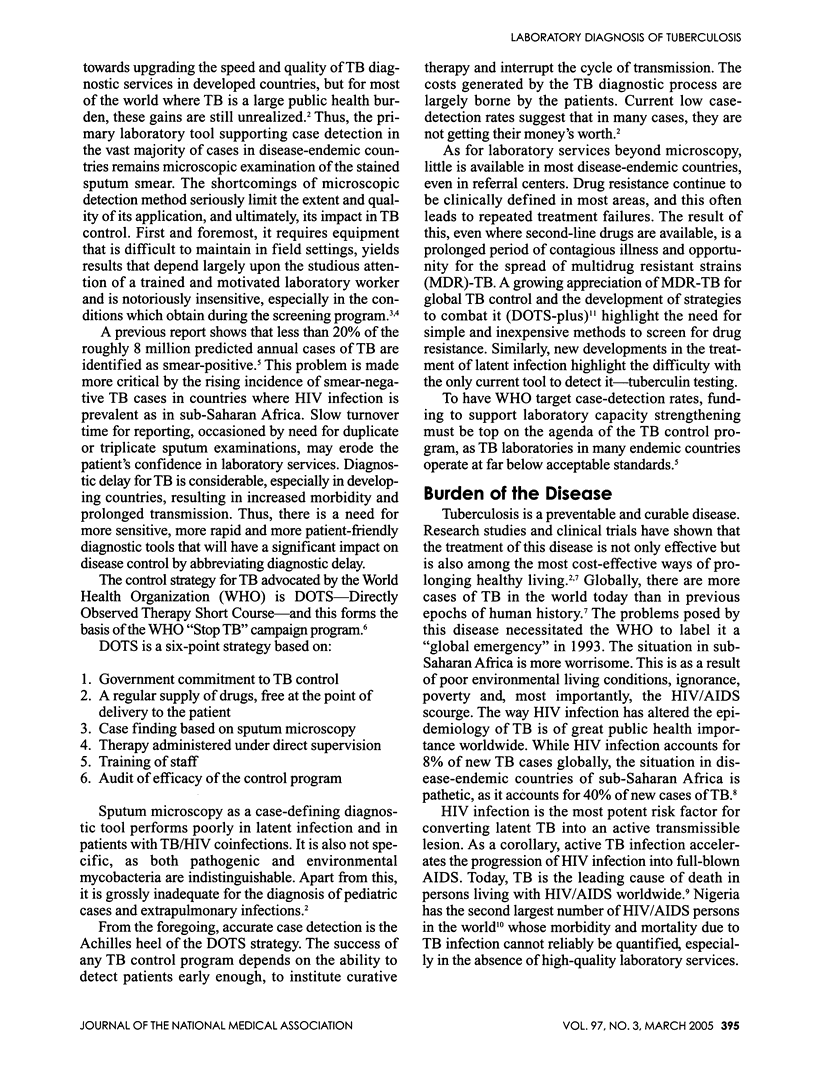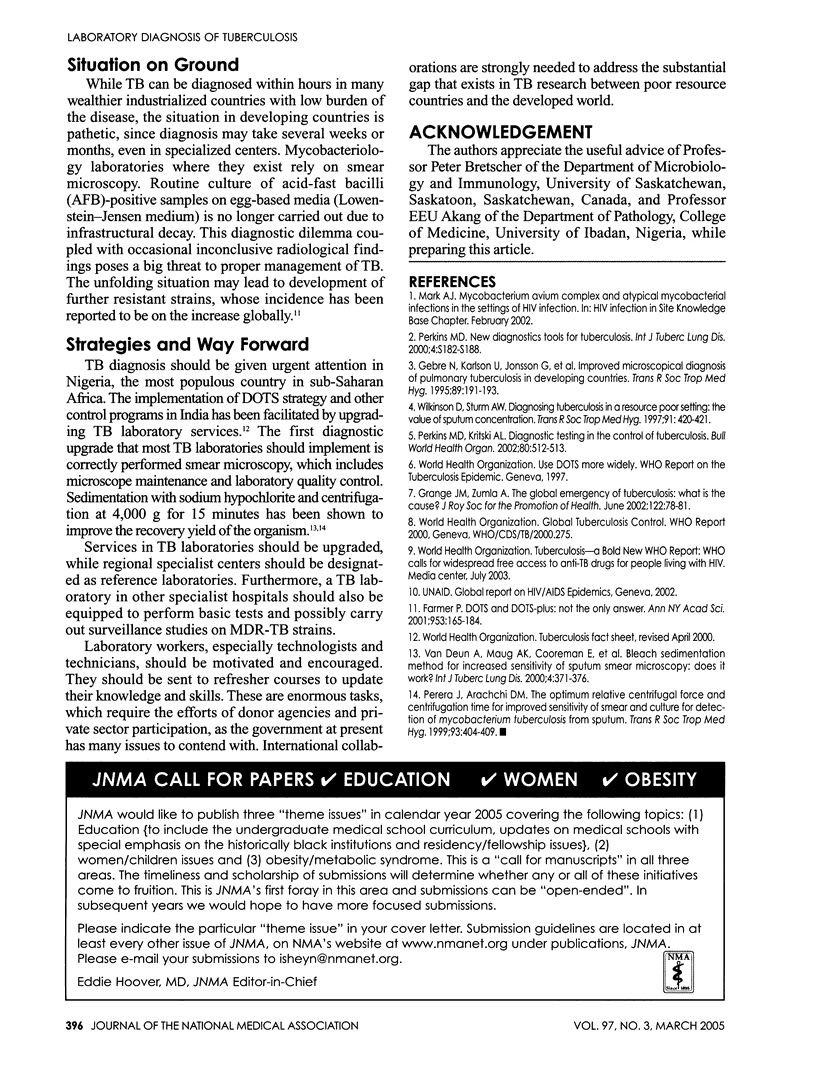Abstract
Tuberculosis (TB) is of great public health concern globally, and the impact is most felt in developing countries of Asia and Africa, where 95% of cases and 98% of deaths are attributable to the disease, The disease is poverty-driven and the situation is further worsened by absence of rapid diagnostic tools to facilitate early diagnosis of the illness, thus leading to widespread of the disease. While attention is being focused on the HIV/AIDS pandemic, little is being heard of TB, especially in the areas of laboratory diagnosis despite the fact that the disease is the commonest cause of death in people living with HIV/AIDS. The importance of a diagnostic laboratory in a TB control program cannot be overemphasized. Smear microscopy, which is the cornerstone of World Health Organization (WHO) 'DOTS' strategy for the treatment of TB, has many drawbacks among which is its inability to detect latent infection and the dependency of its sensitivity on a trained and motivated microscopist. Therefore, there is a need for a more reliable, sensitive and rapid diagnostic test to facilitate early diagnosis of cases and prompt initiation of therapy for a TB control program to have a meaningful impact in the community.
Full text
PDF


Selected References
These references are in PubMed. This may not be the complete list of references from this article.
- Farmer P. DOTS and DOTS-plus: not the only answer. Ann N Y Acad Sci. 2001 Dec;953:165–184. doi: 10.1111/j.1749-6632.2001.tb11375.x. [DOI] [PubMed] [Google Scholar]
- Gebre N., Karlsson U., Jönsson G., Macaden R., Wolde A., Assefa A., Miörner H. Improved microscopical diagnosis of pulmonary tuberculosis in developing countries. Trans R Soc Trop Med Hyg. 1995 Mar-Apr;89(2):191–193. doi: 10.1016/0035-9203(95)90491-3. [DOI] [PubMed] [Google Scholar]
- Grange J. M., Zumla A. The global emergency of tuberculosis: what is the cause? J R Soc Promot Health. 2002 Jun;122(2):78–81. doi: 10.1177/146642400212200206. [DOI] [PubMed] [Google Scholar]
- Perera J., Arachchi D. M. The optimum relative centrifugal force and centrifugation time for improved sensitivity of smear and culture for detection of Mycobacterium tuberculosis from sputum. Trans R Soc Trop Med Hyg. 1999 Jul-Aug;93(4):405–409. doi: 10.1016/s0035-9203(99)90135-9. [DOI] [PubMed] [Google Scholar]
- Van Deun A., Maug A. K., Cooreman E., Hossain M. A., Chambuganj N., Rema V., Marandi H., Kawria A., Portaels F. Bleach sedimentation method for increased sensitivity of sputum smear microscopy: does it work? Int J Tuberc Lung Dis. 2000 Apr;4(4):371–376. [PubMed] [Google Scholar]
- Wilkinson D., Sturm A. W. Diagnosing tuberculosis in a resource-poor setting: the value of sputum concentration. Trans R Soc Trop Med Hyg. 1997 Jul-Aug;91(4):420–421. doi: 10.1016/s0035-9203(97)90263-7. [DOI] [PubMed] [Google Scholar]


